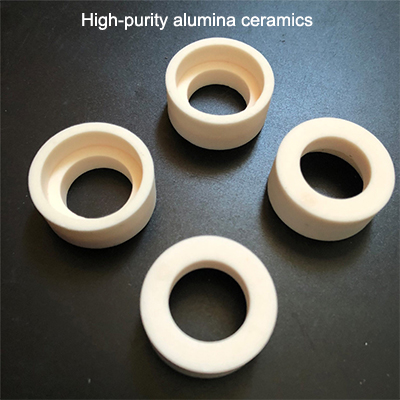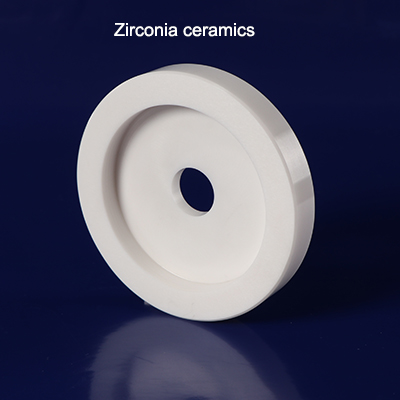Comparative analysis of high-purity alumina ceramics and zirconia


I. Advantages and Application Scenarios of High-Purity Alumina Ceramics
High Temperature Resistance and Corrosion Resistance: High-purity alumina ceramics can maintain stable performance in high-temperature environments (such as semiconductor etching equipment). They have strong resistance to plasma erosion and are suitable for extreme chemical environments.
Insulation and High-Frequency Performance: High-purity alumina ceramics with low high-frequency dielectric loss and excellent insulation properties, they are suitable for scenarios that require stable electrical performance, such as electronic substrates and LED lighting.
Optical Transmittance: Transparent alumina ceramics have both high light transmittance and wear resistance, and are suitable for special instruments such as arc tubes of high-pressure sodium lamps and aerospace optical windows.
- Biocompatibility: Being non-toxic and compatible with human tissues, high-purity alumina ceramics are commonly used in medical implantation fields such as artificial bones and dental implants.
2.Typical Application Scenarios
Semiconductor Manufacturing: Precision components such as etching machine chambers, gas nozzles, and wafer polishing plates to reduce wafer contamination.
Electronic Packaging: LED ceramic substrates and support materials for integrated circuit chips, matching the coefficient of thermal expansion to avoid soldering failure.
High-temperature Industry: Pouring nozzles for molten metal and supports for vacuum furnaces, capable of withstanding high temperatures above 1600°C.
II. Advantages and Application Scenarios of Zirconia
High Toughness: It absorbs energy through martensitic phase transformation, and its anti-fracture ability far exceeds that of traditional ceramics, making it suitable for high-impact scenarios.
Wear Resistance: With a hardness close to that of natural diamonds and a low coefficient of friction, it is suitable for components with long service life requirements, such as high-speed bearings and precision cutting tools.
Biological Inertness: It is non-toxic to the human body and has a smooth surface, making it an ideal material for dental restorations (such as implant abutments and crowns).
Thermal Insulation: Its low thermal conductivity makes it an excellent choice for thermal insulation layers or thermal barrier coatings in high-temperature equipment.
2.Typical Application Scenarios
Medical Devices: All-ceramic dental crowns and implant abutments combine both aesthetics and functionality.
Precision Machinery: Ceramic bearings and grinding media reduce equipment wear and improve operational stability.
Energy and Environmental Protection: Electrolytes for solid oxide fuel cells and carriers for automotive exhaust catalysts enhance energy efficiency.
Special Industries: Bulletproof armors and linings for high-temperature furnaces meet the requirements of both lightweight and high strength.
III. Comprehensive Comparison and Selection Suggestions
1. High-temperature and Insulation Scenarios: Give priority to high-purity alumina ceramics (such as in semiconductor equipment and electronic packaging).
2. Biomedical and Aesthetic Requirements: Zirconia is more suitable (such as in dental restoration and artificial joints).
3. Impact Resistance and Wear Resistance Scenarios: Zirconia has significant advantages in toughness (such as in bearings and cutting tools).
4. Optical and Transparent Components: High-purity alumina ceramics have better light transmittance (such as in optical windows and lighting equipment).
Future trends: High-purity alumina ceramics have outstanding potential in the fields of new energy (such as solid-state battery separators) and quantum computing. Meanwhile, through nanotechnology and composite modification techniques (such as adding silicon carbide fibers), zirconia is expanding into emerging fields like bulletproof materials.

